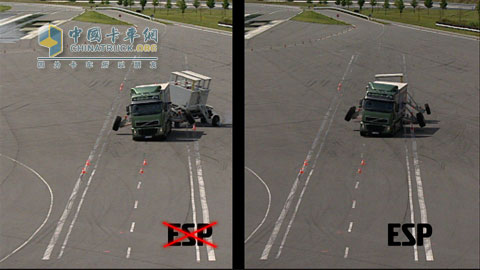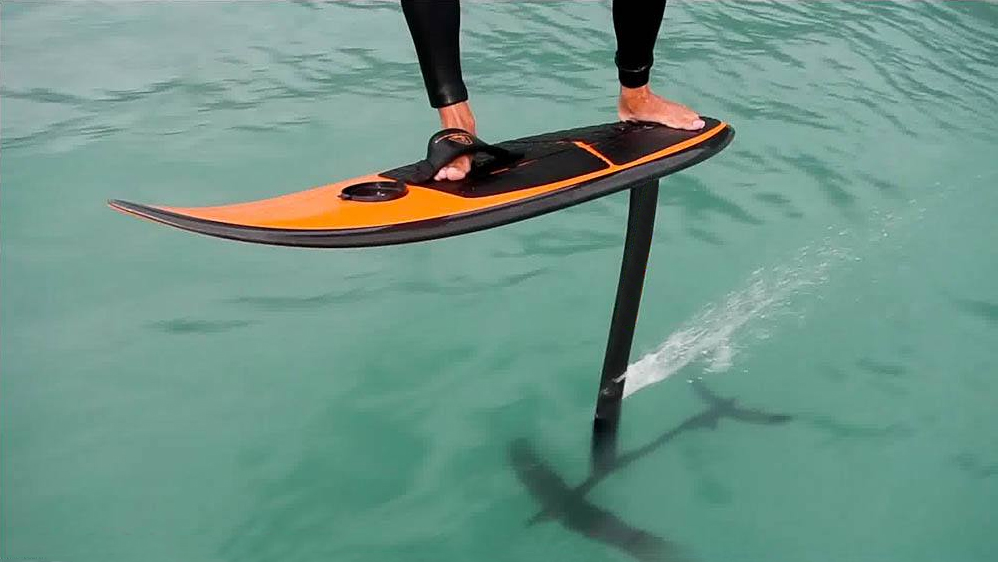New Electronic Stability System Volvo Trucks Launches



In 2008, Volvo Trucks became the first manufacturer in the world to launch a more powerful ESP (Electronic Stability Program) system that can control one or more trailers at the same time. It works well for tractors and trailers. The stabilizing effect, and more importantly, its emergence will increase the transportation safety factor of some dangerous goods, such as fuel transportation.
In single-vehicle accidents, trucks roll over and out of highways account for more than half of the total number of fatal accidents and serious injuries. As Carl-Johan Almqvist, the new director of traffic and product safety at Volvo Trucks Headquarters, said: “Reducing rollover accidents is one of the important ways to reduce truck accidents. We are very happy that Volvo is now able to apply the new version of ESP on FE, FM and FH series models. System, so that there are opportunities for more users to discover the superiority of the system."
The ESP system is controlled by a computer that collects all types of information. Its sources of information include ABS (Antilock Braking System) wheel sensors, steering systems, and a gyroscope. By detecting the movement of the vehicle, the on-board computer can quickly determine whether the vehicle is going to roll over or skid, so as to take effective braking measures on the truck or trailer to ensure the stability of the entire vehicle.
In the case of truck slippage, the main response method of the ESP system is independent braking of each wheel, and the braking of multiple tires is also used to prompt the vehicle to return to a safe driving state. If the vehicle is slipping on a slippery road or in a high-risk road condition that easily causes the vehicle to roll over, the wheels can be independently braked. If necessary, the vehicle can reduce the engine speed through the ESP system to force the vehicle to decelerate and keep the vehicle stable.
Martin Palming, project manager of the ESP program, said: “Comparing with the truck crash simulation test and physical test results without ESP system installed, this system has significantly improved vehicle rollover and slippage. Therefore, adopting ESP system for freight companies It is definitely a sensible investment that can effectively reduce the economic losses caused by trucks, trailers, and cargo damage caused by serious traffic accidents."
The ESP system integrates the functions of anti-lock braking system (ABS) and traction control system (TCS). It has attracted the attention of many European and American countries. All countries have successively enacted legislation to force new production vehicles to be equipped with this intelligent initiative. Security system.
In China, ESP is still a relatively unfamiliar term for a considerable number of consumers. The system's rate of fitment is much lower than that of Europe and the United States. Experts said that Chinese domestic companies have not yet been able to produce ESPs. Only foreign companies or joint ventures can sell the system. Just as a person in charge of a self-owned brand vehicle company in China said: “We have been cautious about citing cutting-edge technology. ESP is still fairly A relatively new thing still requires a deeper understanding of its advanced nature and reliability. In addition, we need to consider the cost and market positioning of the product, so we will not blindly add ESP to vehicles."
But for Volvo Trucks' customers, having such an advanced active safety system only costs a few thousand dollars more than the original price, which does not increase the cost for the users who need it. Instead, it greatly increases the cost. The security of the user in the future use of trucks is a wise choice for killing birds with one stone.
Although the ESP system has yet to be popularized in China, experts in related industries also stated that because ESP plays a pivotal role in improving vehicle safety, its popularity has become imperative.
Appendix: Overview of ESP Regulations in Countries Around the World:
- In 2007, the National Highway Traffic Safety Administration (NHTSA) promulgated laws and regulations. Since 2012, all vehicles weighing less than 4.5 tons must be equipped with ESP systems.
- In February 2009, Euro NCAP incorporated the electronic stability program ESP into its new evaluation process. Since 2010, only vehicles with ESP as a standard configuration are likely to receive the highest five-star safety assessment.
- On March 10, 2009, the European Parliament decided that since November 2011 all new passenger cars and commercial vehicles registered in the EU must be equipped with ESP systems. Since November 2014, all new cars must be equipped with ESP systems.
- On March 13, 2009, the Canadian government plans to introduce new safety regulations. Starting September 1, 2011, all passenger cars that are required to be sold in Canada, as well as commercial vehicles, trucks, and public vehicles with a total weight of 4.5 tons or less are required. Cars come standard with ESP systems.
- On March 18th, 2009, the Brasilia National Transport Committee passed a resolution that, starting in January 2014, all new cars (domestic) sold in the Brazilian market will be forced to deploy front airbags and anti-lock braking systems (ABS).
- On April 23rd, 2009, the National Association of Automobile Safety and Rescue Casualties (NASVA) and the Ministry of Land Transport, Infrastructure, and Transport (MLIT) held a press conference on the Japanese New Car Assessment System (JNCAP) in Tokyo. Describes how the new system displays the status of vehicles equipped with Electronic Stability Control (ESC). In the future, NASVA plans to update the JNCAP system to bring it closer to Euro NCAP.
- In June 2009, following the promulgation of regulations by the United States and the European Union, Australia also stipulated that all new models must have mandatory installation of ESP systems since November 2011. And after two years, the installation scope of ESP will be expanded to all models.
A Hydrofoil is a lifting surface, or foil, that operates in water. It can be applied on the kireboard, surfboard and SUP.
They are similar in appearance and purpose to aerofoils used by aeroplanes. This surf hybrid (aluminium-carbon) foil is made to lift off as early as possible on a wave, an outside reef or soft wave. Its maneuverability and controlled accelerations provide good steering to remain in the right section of the wave when surfing.

Hydrofoil
Aluminium Hydrofoil,Kiteboard Foil,Surfing Foil,Kite Hydrofoil,Carbon Foil Board,Carbon Foil Kiteboard
Huizhou City Melors Plastic Products Co., Limited , https://www.melorsfoam.com